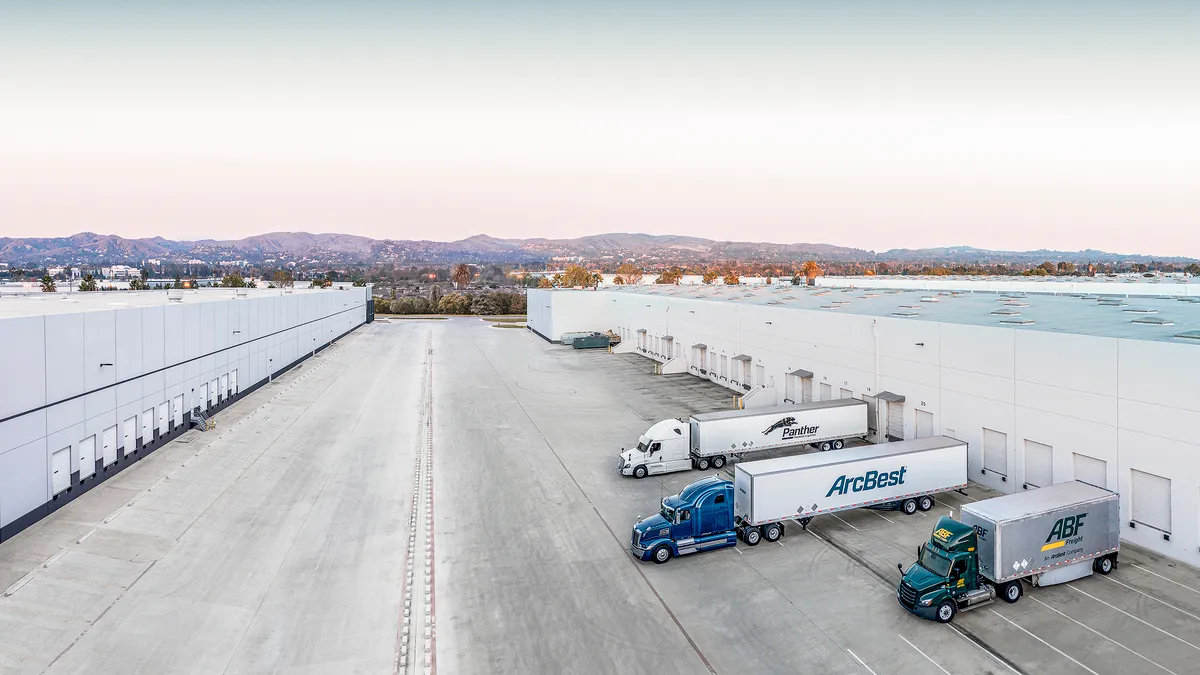ArcBest Corp. saw a 10% surge in LTL shipments at the end of July, as Yellow Corp. shuttered terminals and filed for bankruptcy, sending excess volume into the market.
The flood of volume allowed ArcBest-owned ABF Freight to prioritize the most profitable shipments, CFO and Treasurer Matt Beasley said during a Q2 earnings call.
The extra volume “is handled through reduction in less-profitable ‘dynamic’ shipments,” Beasley said, which the carrier accepts in soft markets so it can retain staff in anticipation of a future freight upswing.
Shippers fleeing Yellow’s network — which represented around a tenth of the market’s capacity — provided a boost to its LTL competitors in recent months, executives have boasted to investors. ABF Freight, Saia, TForce Freight and XPO all reported a bump in freight levels in preparation for the third-largest LTL carrier’s exit.
The extra volumes were a welcome change of pace for ArcBest, which reported a 10% YoY daily revenue drop in its asset-based business in Q2. Beasley blamed the drop on a decrease in order frequency and shipment quantities from core customers.
But the number of dynamic shipments wasn’t helping ABF Freight’s performance.
“The addition of transactional LTL shipments at current market rates naturally reduces the total revenue per hundredweight statistic,” the CFO said.
TD Cowen analysts were unsurprised to see ArcBest first in line to take Yellow’s old freight.
“We see [ArcBest] as a natural alternative to Yellow,” the analysts wrote in a late-July investors note.
Saia, which saw a 5% YoY increase in shipments in July, is approaching the extra freight coming its way with a similar focus on revenue, CEO Fritz Holzgrefe said during a Q2 earnings call. In an LTL market that has managed relatively strong pricing discipline, Saia wants to win freight for the long term with solid service performance — not low prices.
The carrier is “not in the market to chase volume, we're in the market to find profitability, and to drive returns,” Holzgrefe said. “That will be our focus.”
Yellow’s exit sent about an extra 3,000 shipments per day to TForce Freight in late July, TFI International Chairman, President and CEO Alain Bédard told investors.
“Prior to all these things going on right now, we were doing about 23,000 shipments a day, very steady since January of '23,” Bédard said. “And then now, we're running more like 26,000 shipments today.”
TForce Freight, too, has seized the opportunity to improve its freight mix. Revenue per shipment swung to an increase of 3.5% at the end of July from down 2.5% YoY for Q2 overall, he said.
XPO’s monthly tonnage improved each month throughout Q2, and its shipment count shot up 8.8% in July, amounting to roughly 3,000 more shipments per day, Chief Strategy Officer Ali Faghri said on an earnings call.
Shipment counts and tonnage rates for XPO bucked typical June-to-July trends, as the carrier typically sees a sequential drop in each metric, CEO Mario Harik told investors. Combined with an expected freight turnaround next year, he said, Yellow’s exit bodes well for XPO’s long-term future, beyond the immediate gains.
“When you take out this amount of capacity, we would expect yield to see tailwinds in the quarters and years to come,” he said.










